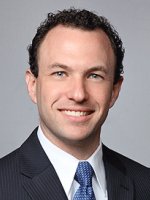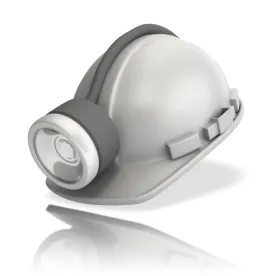At a stakeholder meeting today at its Arlington, VA headquarters, Mine Safety and Health Administration (MSHA) announced dramatic new changes to requirements that metal/non-metal mine operators conduct workplace examinations each shift. The official publication of the proposed rule in the Federal Register will launch a 90-day comment period that will include four public hearings around the country. Mine operators are sure to weigh in with concerns over the potential risks, challenges, and costs created by the rule. Read on for a full summary and analysis…
In conjunction with the briefing announcement, MSHA published an advance copy of the proposed rule and a summary fact sheet.
Significant new requirements
The new rule makes several major changes to the decades-long practice of conducting workplace exams:
-
Exams before work. While the current rule allows workplace exams to be conducted at any time during a shift, the new rule would require exams to be performed prior to beginning work in an area.
-
Promptly notifying miners in an area of adverse conditions. The rule adds a requirement that the mine operator “shall promptly notify miners in any affected areas of any adverse conditions found that may adversely affect safety or health and promptly initiate appropriate action to correct such conditions.”
-
Making a signed, detailed record of adverse conditions and corrections. The current rule merely requires the mine operator to make a record that an exam was performed, keep the record for at least one year, and make the record available for inspection by MSHA. The proposed rule adds a number of significant new requirements:
-
Signed and dated. The competent person who conducted the exam must sign and date the record before the end of the shift.
-
Detailed descriptions. The record must include the locations examined, “a description” of each adverse condition found, a description of corrective actions taken, the date of corrective action, the name of the person who recorded the corrective action and the date on which it was recorded.
-
Available to miners. The exam records must be available not only to MSHA but also to miners’ representatives.
-
The proposed rule does not change the definition of “working place” or “competent person.” MSHA reiterated its prior guidance that “working place” includes “areas where work is performed on an infrequent basis, such as areas accessed primarily during periods of maintenance or cleanup, if miners will be performing work in these areas during the shift.” It added, however, “Operators would be required to examine isolated, abandoned, or idle areas of mines or mills only when miners have to perform work in these areas during the shift.”
In terms of “competent person,” MSHA restated that it is a “best practice” for “a foreman or other supervisor to conduct the examination in most cases,” though “an experienced nonsupervisory person may also be ‘competent.’”
Questions about impact on mine operators
The rule raises many questions for mine operators. Some of its possible impacts could include:
-
Impact on production? As mine operators adjust to a new rhythm for workplace exams, will it affect production? Will a requirement to examine before work, rather during the shift, create delays? Will the paperwork required by the proposed rule become a burden and/or logistical challenge?
-
Unintended safety consequences? Will some miners take the wrong message from the proposed rule and view the exam-before-work requirement as a signal that once the shift begins, they can let down their guards? Will some believe that they are done looking for hazards after the shift begins, rather than continually “examining” their work area throughout the shift?
-
Higher negligence and penalties? An operator following the new rule and MSHA’s “best practice” of having supervisors conduct exams and personally sign and date the records could be exposed to significantly increased liability for workplace exam violations. MSHA could argue that the supervisors are “agents” of the company under the Mine Act and bear direct responsibility for failure to find or correct adverse conditions. This could greatly increase negligence, unwarrantable failure findings, and individual civil penalty proceedings. In cases of serious accidents, these records could become evidence and lead to increased civil liability, as well.
-
Citations based on exam records? Will MSHA issue citations for the “adverse conditions” mine operators disclose in examination records? During today’s stakeholder briefing, MSHA declined to say. Whether or not it becomes official MSHA policy, some MSHA inspectors may see the new written exam records as a treasure trove of information that they can use to write citations for conditions that the mine operator self-disclosed and even corrected. Short-lived, theoretical violations that were corrected before they presented any hazard to anyone could thus become the basis for citations.
-
More citations for failures to correct adverse conditions? With extensive written records of both conditions and corrections, as well as dates, MSHA may issue more citations to operators for failure to correct – or “promptly” correct – adverse conditions based on the examination records.
-
Increased hazard complaints? MSHA concedes in the proposed rule that mines are “dynamic work environments where working conditions can change rapidly and without warning.” Finding changed, adverse conditions that require correction is common and not necessarily problematic if timely corrections are made. The new requirement of notifying miners each time an adverse condition is found may lead to a constant stream of announcements. The newly detailed exam records will likely contain hundreds of pages of routine examinations (and adverse conditions) now available to miners to browse. Will all of this information – even about conditions that were corrected before they presented a hazard – create anxiety? Will it drive more hazard complaints – of both the legitimate and unjustified varieties?
MSHA’s justification
MSHA justifies the new rule by stating that “[e]ffective working place examinations are a fundamental accident prevention tool.” It cites 122 mining fatalities in the last five years as a result of violations of “Rules to Live By” standards. MSHA said that it “believes many of these fatalities could have been prevented with better working place examinations.”
MSHA notes some frustration that there were 68 metal/non-metal fatalities in the last three years, up from 54 fatalities in the prior three years. It notes that it has tried many approaches to reduce fatalities further: sharing best practices and training materials, as well as conducting stakeholder conferences, online training, and “walk and talks.” MSHA concludes, “These efforts, however, have not been sufficient to address the increase in fatalities that began in 2013.”
One question that commenters on the proposed rule surely will debate is whether MSHA has demonstrated the connection between these tragic fatalities and workplace examinations. MSHA does cite anecdotes of a few particular accidents, which it believes could have been prevented by workplace examinations. It is clear that MSHA has a theory that signed and detailed examination records will drive higher-quality exams and corrections of conditions. Commenters on all sides no doubt will debate whether or not there is sufficient real-world evidence to support that theory.
Specific request for comments
Over the next 90 days, MSHA says that it would like the affected mining community to submit comments on the proposed rule, including on:
-
Whether MSHA should require that examinations be conducted within a specified time period, such as 2 hours before miners start work in an area.
-
Whether the rule should require that the competent person conducting a working place examination have a minimum level of experience or particular training or knowledge to identify workplace hazards. Should the competent person have a certain “ability, experience, knowledge, or training that would enable the person to recognize conditions that could adversely affect safety or health?”
-
What impact will the proposed rule have on small mines? What alternatives and best practices might small mines use to “implement more effective working place examinations?”
-
What have been the experiences and benefits seen by mine operators which already have voluntarily adopted workplace exam programs similar to the proposed rule’s requirements?
MSHA will hold four public hearings during the comment period: July 19, 2016 (Salt Lake City), July 21, 2016 (Pittsburgh), July 26, 2016 (Arlington), and August 4, 2016 (Birmingham). The hearings will be transcribed and made a part of the record. The comment period closes on September 6, 2016.




 />i
/>i

